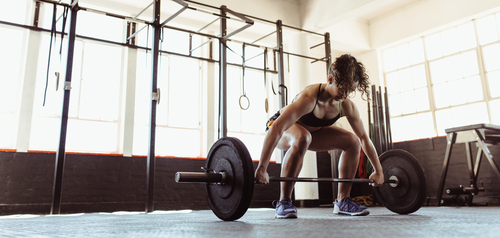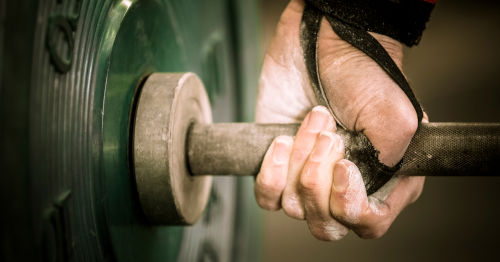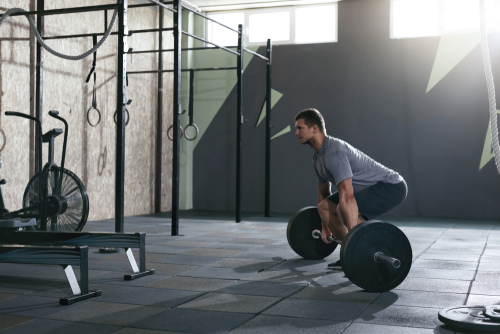What is a snatch grip deadlift compared to other deadlift variations?
For a traditional deadlift, the starting position will see you set up with your hands on the bar directly beneath your shoulders, yet for the snatch grip deadlift, your arms will be further apart allowing for a wider grip.
Of all the possible deadlift variations, what are the benefits of a snatch grip deadlift, how do they differ from regular deadlifts, and why should you consider introducing them into your programme?

Benefits of snatch grip deadlift
Some of the key benefits of a wide grip are:
Back strength and hypertrophy
The wider grip will be more demanding for the muscles of your back, particularly the lats and erector spine, and targets the upper back muscles such as the Traps and Rhomboids. This variation will also help lifters who are prone to ‘rounding’ their backs during a standard deadlift
Grip strength
The wider grip puts you at a clear mechanical disadvantage. This means that your grip will probably find it more challenging to keep hold of the same amount of weight because the angle of your arm doesn’t allow you to grip the bar in the same way you can with a shoulder-width grip.
Increased range of motion
Bending your knees and pushing your hips back a little bit more increases the range of motion of your hip and knee joints slightly, which means your posterior chain will have to work hard to produce sufficient strength and power.
Crossover for Olympic weightlifters
The snatch grip deadlift is basically the bottom section of an Olympic snatch, so by focussing on this section of the more complex lift you can easily iron out any technical faults and improve your overall snatch technique.
Crossover for any lifter
As you start pulling the bar away from the floor your trunk will need to brace tightly, and because of the increased depth, your ability to hip hinge will improve, and we have already highlighted the increased grip strength. These three traits will benefit pretty much anyone, with any goal.

What muscles does a snatch grip deadlift target?
The main primary muscles targeted by a snatch grip deadlift are:
Lats, Traps and Rhomboids (upper back muscles), Erector Spinae (lower back), Glutes, Hamstrings, Quads, Forearms, and a huge amount of trunk/core musculature.
How to do a snatch grip deadlift
1 – Approach the barbell (on the ground). Set up with your feet roughly hip-width apart, your ‘midfoot’ directly underneath the bar, and with pressure evenly distributed throughout your feet.
2 – Push your hips back as far as you, and bend at the knees to lower your hands down towards the bar. Place your hands on the bar in the ‘snatch grip’* position with a double overhand grip**.
3 – Grip tightly, and engage your arms, trunk/back, hips, and legs so that your body is tensed and ready to lift. Your shoulders should be directly above your hands, your back should be flexed, your chest up, and your shoulders slightly above hip height.
4 – Initiate the movement by simultaneously pushing your feet down into the floor (“push the floor away”) and pulling the bar up with your hands, arms, and back. Be careful to ensure that your hips and shoulders move at the same speed during the initial stage as the bar moves from the floor to around mid-shin height – film yourself from the side and watch it back in slow motion if you need to check.
5 – From mid-shin height you should drive your hips forwards, keeping the bar as close to your legs as possible, and finish in a standing position with your chest up and the bar in contact with your mid/upper thighs.
6 – Push your hips back towards the wall and keep the bar in contact with your legs throughout, return to the start position in a controlled manner ready to re-set and repeat the movement.

Conclusion
Whether your goals are extremely specific (Olympic weightlifting) or extremely generic, the snatch grip deadlift is a lesser-known variation of a very familiar exercise that is well worth introducing into your strength and conditioning programme.
The additional grip strength, trunk strength, and hip hinge strength are crucial physical traits that nobody can be ‘too good’ at and that everyone will benefit from improving.